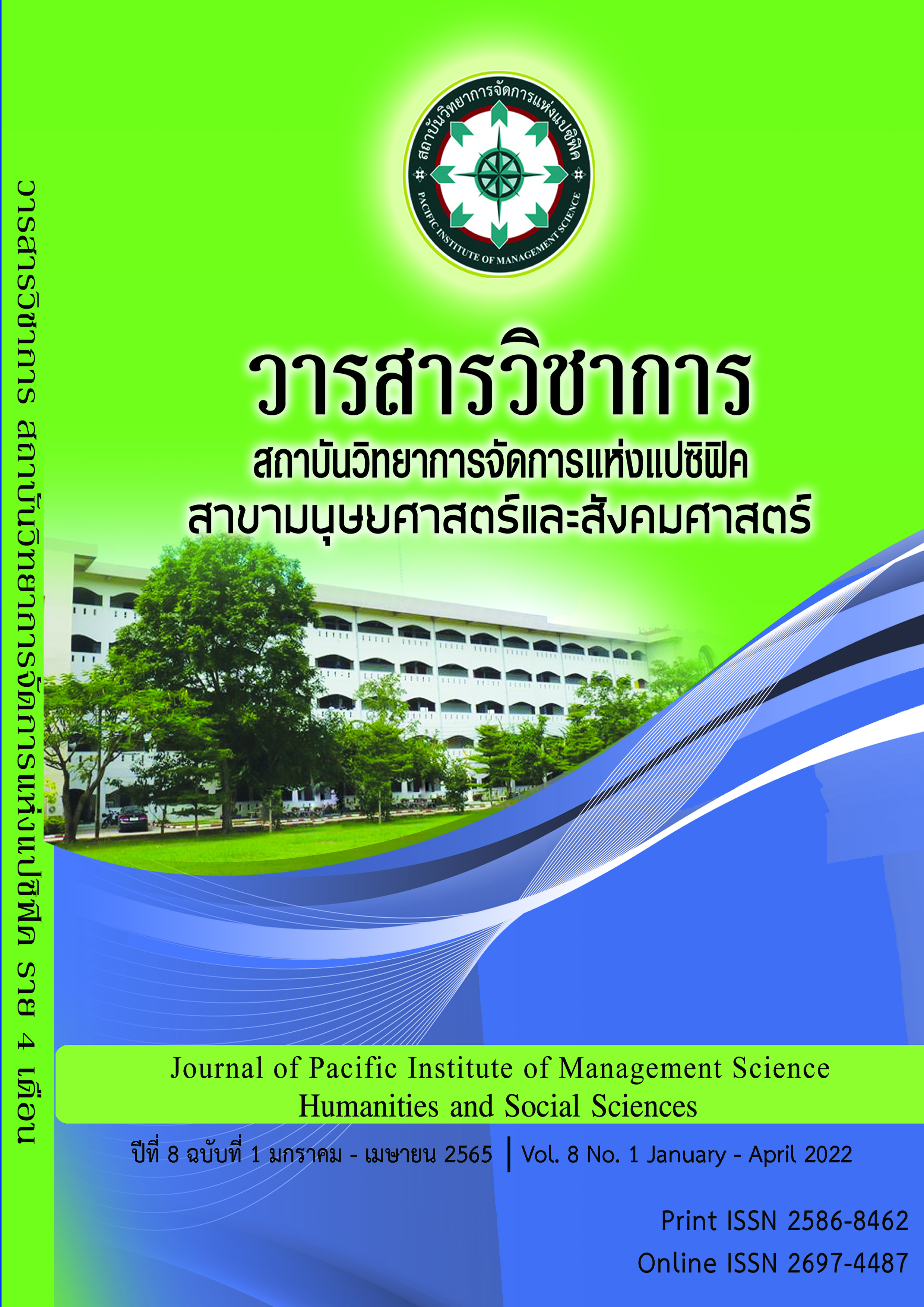Human Resource Development in Promoting Morality and Ethics of Wat Arun Ratchawararam Rajaworavihars, Bangkok Yai District, Bangkok Metroplis
Keywords:
Effectiveness, Human Resource Development, Morality and EthicsAbstract
This research has 3 research objectives: (1) to study the effectiveness of human resource development for promoting morality and ethics (2) to study methods of various activities to promote morality and ethics and (3) to provide suggestions for raising the effectiveness of human resource development on moral and ethical promotion. This research is qualitative research, the information required for research is obtained from the relevant documents. Participatory observations and in-depth interviews with 20 people and the priests with high knowledge and experience were deliberately chosen, for the benefit of in-depth interviews. The data collected from 3 sources were analyzed using content analysis and descriptive lectures.
The research results were found that the effectiveness of human resource development was found that (1) knowledge, skills, and morality were created. There is a collaboration between agencies, to develop human resources to have knowledge and virtue (2) to carry out activities to promote morality, ethics, morals, training, ethical behavior Monks are very strict. About how to behave in accordance with Buddhist precepts the monks have treated themselves as an example of the novice and the subordinates, behaving in the rules of meditation, and training in the establishment of peace of mind is very important. Trained priests have good mental or emotional control and perform their duties with a stable mind and wisdom. It is about the law of karma, doing well, doing bad, doing evil. Problem solved in performing their duties with the knowledge of the current conditions and work using the principles of the reason (3) recommend training for the monks to organize activities. In which the new monks have adapted to including talking and teaching about teaching monks to demonstrate the importance and benefits of the Dharma
References
กรมการศาสนา กระทรวงวัฒนธรรม และ คณะ. (2550). การพัฒนาส่งเสริมคุณธรรมจริยธรรม ประชาชนประจำปี. กรุงเทพฯ : โรงพิมพ์ชุมนุมสหกรณ์การเกษตรแห่งประเทศไทย.
กรมการศาสนา กระทรวงศึกษาธิการ.(2540). คู่มือพระสังฆาธิการว่าด้วยเรื่องการคณะสงฆ์และการศาสนา. กรุงเทพฯ : โรงพิมพ์การศาสนา
กองแผนงาน กรมการศาสนา กระทรวงศึกษาธิการ. (2542). คู่มือพระสังฆาธิการว่าด้วย พระราชบัญญัติ กฎ ระเบียบ และคำสั่งของคณะสงฆ์. กรุงเทพฯ : โรงพิมพ์การศาสนา.
กัลยา ครองแก้ว และคณะ. (2540). สถิติ. กรุงเทพฯ : จุฬาลงกรณ์มหาวิทยาลัย.
นิสดารก์ เวชยานนท์. (2550). บทความทางวิชาการ HR. กรุงเทพฯ : คณะรัฐประศาสนศาสตร์. สถาบันบัณฑิตพัฒนบริหารศาสตร์.
บรรยงค์ โตจินดา. (2546). การบริหารงานบุคคล. กรุงเทพฯ : รวมสาส์น.
บุญชม ศรีสะอาด. (2545). การวิจัยเบื้องต้น. พิมพ์ครั้งที่ 7. กรุงเทพฯ : สุวีริยาสาส์น.
พระพุทธวรญาณ. (2548). ธรรมญาณนิพนธ์ : 100 ปีพระพุทธวรญาณ, พิมพ์ครั้งที่ 2. กรุงเทพฯ : โรงพิมพ์มหาวิทยาลัยธรรมศาสตร์.
Abranam H. Maslow. (1973). A Theory of Human Motivation. Psychological Review 50.
Andrew Mayo อ้างใน สุรพงษ์ มาลี, “The Human Capital Journey : เส้นทางสู่บทบาทใหม่ของการบริหารทุนมนุษย์”, วารสารข้าราชการ, ปีที่ 51 ฉบับที่ 2, (มีนาคม-เมษายน 2549), หน้า 22-25.
Douglas McGregor. (1960). The Human Side of Enterprise. New York : McGraw – Hill.
D. Jamali, G. Khoury, H. Sahyoun, (2006). The Learning Organization, Leadership styles in the Palestinian large‐scale industrial enterprises.
Flippo. Edwin B. Management : (1971). A Behavioral Approach.Boston : Allyn & bacon.
Lyman W. Porter and Edwarad E. Lawler III. (1968). Managerial Attitudes and Perfomance. Homewood. III. Dorsey Press.
Megginson. Leon C. Personnel. (1969). A Behavioral Approach to Administration. Homewood: Richard
D Lrwin.
Pace.RW.Smith. (1991). Human Resource Development. New Jersey : Prentlice Hall.
Robbins, S. P. (1990). Organization theory: Structure, design and applications (3rd ed.). Englewood Cliffs, NJ: Prentice-Hall.
Sabatier &Mazmanian 1980) “The Implementation of Public Policy: A Framework of Analysis”. Policy Studeies Journal Contents. Special Issue.
Vangen andHuxham (2010). Introducing the theory of collaborative advantage. In: Osborne, S (ed.) The New Public Governance? Emerging perspectives on the theory and practice of public governance. London, Routledge, pp 163-164
Wheelen, T. L. & Hunger, J. D. (2006). Strategic Management and Business Policy. (10thed). New Jersey : Pearson Prentice Hall.
Downloads
Published
Issue
Section
License
Copyright (c) 2022 Pacific Institute of Management Science

This work is licensed under a Creative Commons Attribution-NonCommercial-NoDerivatives 4.0 International License.
บทความที่ได้รับการตีพิมพ์เป็นลิขสิทธิ์ของ สถาบันวิทยาการจัดการแห่งแปซิฟิค
ข้อความที่ปรากฏในบทความแต่ละเรื่องในวารสารวิชาการเล่มนี้เป็นความคิดเห็นส่วนตัวของผู้เขียนแต่ละท่านไม่เกี่ยวข้องกับสถาบันวิทยาการจัดการแห่งแปซิฟิค และคณาจารย์ท่านอื่นๆในสถาบันฯ แต่อย่างใด ความรับผิดชอบองค์ประกอบทั้งหมดของบทความแต่ละเรื่องเป็นของผู้เขียนแต่ละท่าน หากมีความผิดพลาดใดๆ ผู้เขียนแต่ละท่านจะรับผิดชอบบทความของตนเองแต่ผู้เดียว







